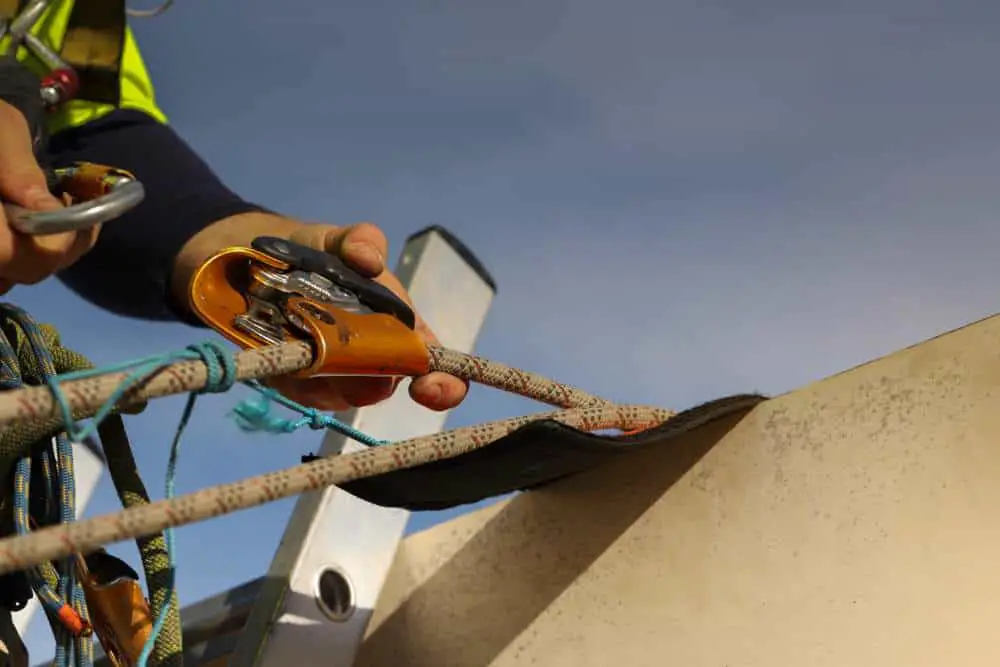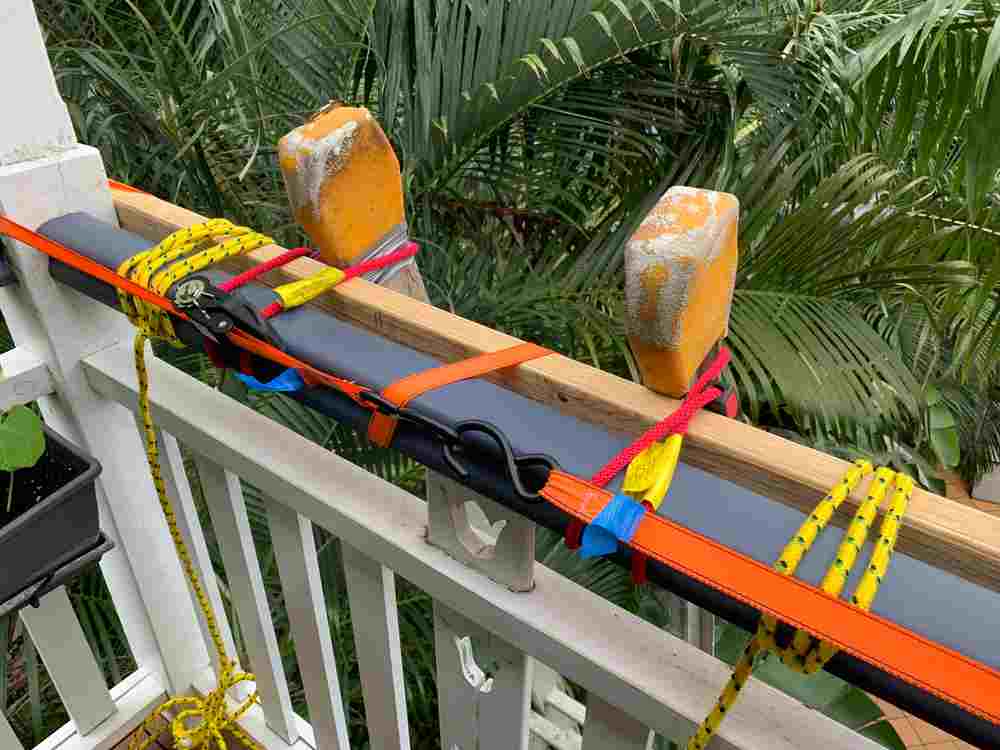Most ladders today come with basic fall protection systems to prevent the user from experiencing fall injuries. Common basic fall protection systems are rubberized feet and a modified head.
However, ladders that come with fall protection systems are often expensive. Therefore, they’re unnecessary for simple everyday tasks such as cleaning gutters or ceilings, installing lamps, or fixing walls.
The simplest way to make a simple ladder safer is to learn ladder tie off systems properly so that it never slip or skid around.
This article will teach you step-by-step how to tie off a ladder for safety. So, without any further ado, let’s jump right in.
Here is how to tie off a ladder for safety
In this article, I’ll be assuming that your ladder is unstable. Follow these steps to tie it off securely in place.
Step 1: Inspect how much the ladder shakes or wobbles
Firstly, you must inspect how much the ladder is shaking or wobbling. Doing so will help you determine how much tying you have to do.
Determining is easy. You can either give the ladder a short shake. Or you can give it’s base a slight kick to find out.
Step 2: Find a spot that will serve as an anchor for tying
The anchor will serve as the stabilizer for the ladder. Usually, the anchor should be a very solid spot. The hangers can serve as a good anchor when working on gutters.
On the other hand, you can use the mullion or jam when working on windows. In cases where no anchor is available, you have to make one yourself.
Step 3: Ask someone to keep the ladder still and climb
Of course, you can’t just climb a wobbly ladder alone. Before going up, get someone to keep the ladder still for a while.
After that, get the rope and start climbing. Remember that the person must not let go until you finish tying the ladder.
Step 4: Tie the rope on the ladder and anchor to bind them
After positioning yourself well, you should start binding the ladder and anchor with the rope. Remember that mindless binding won’t work.
You have to tie in a way that doesn’t loosen while doing something on the ladder. Therefore, knowing the following binding knots will be very useful:
If you’re trying to tie off your ladder for storage purposes then read my another article dedicated to ladder storage solutions. I’ll walk you through the process step by step.
When to Tie Off a Ladder?
Here are some likely scenarios when it’s best to tie off a ladder for safety.
- Tie off whenever the ladder is in a wobbly or shaky position
- Whenever you’re about to carry heavy items at the top, tie your ladder off (e.g., paint bucket, carpentry equipment, etc.)
- Tie off whenever you’re working near children (the children might accidentally crash on the ladder and cause accidents)
- Whenever you’re using an old ladder, tie it off because it’s more likely to create an issue.
- Tie off whenever you’re working on a very elevated setting (e.g., gutters, roofing, ceiling, second-floor windows, etc.)
What’s the best, wire or rope?
Wire and ropes are the most common items that you’ll want to use to tie off a ladder. Between the two, I prefer that you use a rope over a wire for three reasons.
First, a wire is less flexible than a rope, and it might not be easy to tie it securely.
Second, a wire can loosen after it’s tied. And third, a wire is bulkier than a rope.
You should also be fine with ladder tie off straps but make sure it’s a high-quality strap. You can also check out my recommendations on Amazon.
So, what’s the best rope for tying off a ladder? There are about 21 different types of rope. However, only two types are very useful for tying – the manila rope and jute rope.
Manila and jute ropes are very flexible, don’t become loose, and light. That said, they’re what you want for keeping a ladder secure in place.
A word of advice- never tie yourself to the ladder
You might think tying yourself to the ladder to avoid falling is a good idea. I hate to destroy the fun. But that brilliant idea isn’t brilliant after all. Tying yourself with a ladder can do more harm than good.
Firstly, doing so will make it impossible to get off whenever the ladder attempts to fall.
Secondly, it will make moving hard. Third, tying yourself will add weight to the ladder and lead to losing balance.
Conclusion
Never attempts to work on a shaky ladder. Find ways to stabilize the ladder before attempting to do something on it. Tying off is one of the most basic methods that you can use to prevent a ladder from crashing while it’s being used.
In addition to that, having a clear idea about how to tie off a ladder to a roof is even more crucial because so many ladder falls happen while someone is trying to get on the roof. Your safety should be the top priority.
So remember to tie off when the ladder’s stability becomes an issue.



